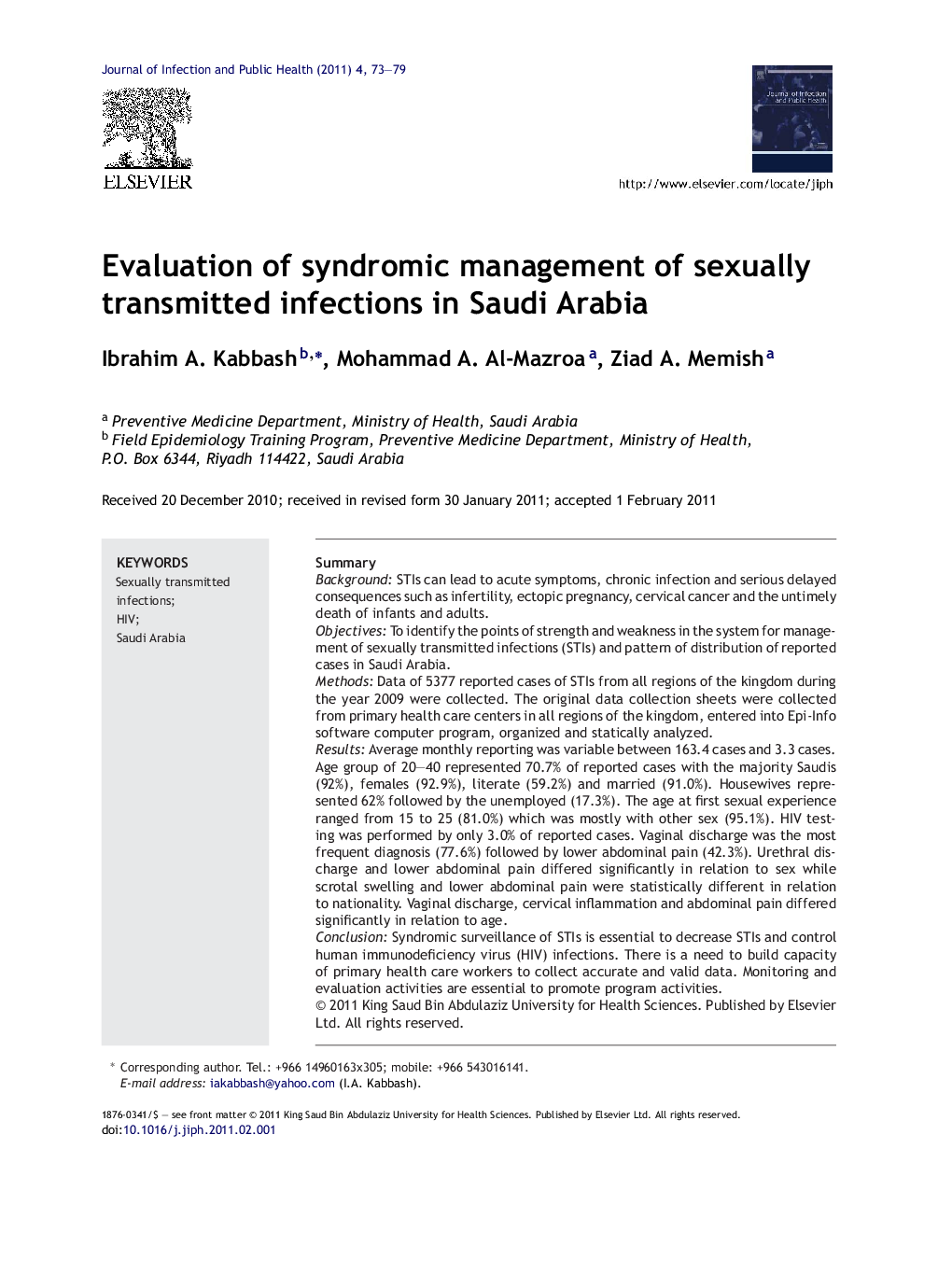| Article ID | Journal | Published Year | Pages | File Type |
|---|---|---|---|---|
| 3406210 | Journal of Infection and Public Health | 2011 | 7 Pages |
SummaryBackgroundSTIs can lead to acute symptoms, chronic infection and serious delayed consequences such as infertility, ectopic pregnancy, cervical cancer and the untimely death of infants and adults.ObjectivesTo identify the points of strength and weakness in the system for management of sexually transmitted infections (STIs) and pattern of distribution of reported cases in Saudi Arabia.MethodsData of 5377 reported cases of STIs from all regions of the kingdom during the year 2009 were collected. The original data collection sheets were collected from primary health care centers in all regions of the kingdom, entered into Epi-Info software computer program, organized and statically analyzed.ResultsAverage monthly reporting was variable between 163.4 cases and 3.3 cases. Age group of 20–40 represented 70.7% of reported cases with the majority Saudis (92%), females (92.9%), literate (59.2%) and married (91.0%). Housewives represented 62% followed by the unemployed (17.3%). The age at first sexual experience ranged from 15 to 25 (81.0%) which was mostly with other sex (95.1%). HIV testing was performed by only 3.0% of reported cases. Vaginal discharge was the most frequent diagnosis (77.6%) followed by lower abdominal pain (42.3%). Urethral discharge and lower abdominal pain differed significantly in relation to sex while scrotal swelling and lower abdominal pain were statistically different in relation to nationality. Vaginal discharge, cervical inflammation and abdominal pain differed significantly in relation to age.ConclusionSyndromic surveillance of STIs is essential to decrease STIs and control human immunodeficiency virus (HIV) infections. There is a need to build capacity of primary health care workers to collect accurate and valid data. Monitoring and evaluation activities are essential to promote program activities.
